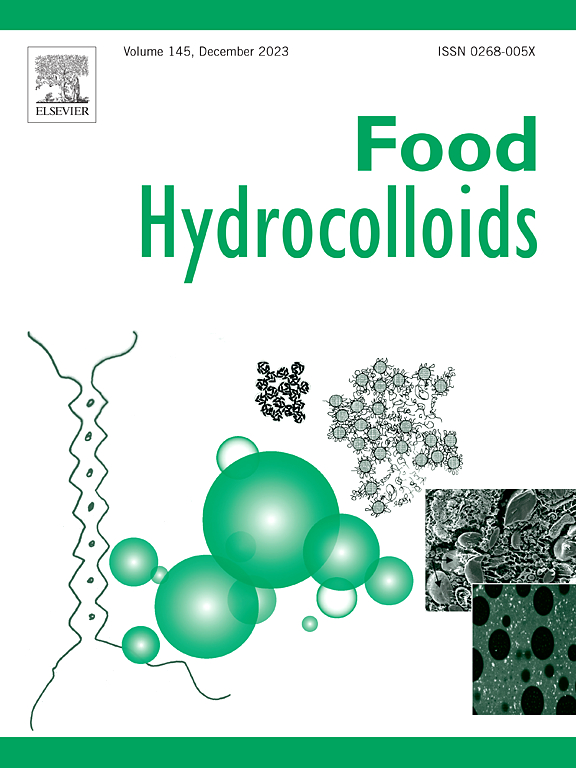Ethylcellulose oleogel as a prolonged release delivery system for probiotics. Development and validation of a cold-mixing method
IF 11
1区 农林科学
Q1 CHEMISTRY, APPLIED
引用次数: 0
Abstract
Ethylcellulose thickened oil (EC oleogels) has a significant retarding effect on lipolysis and may be used for controlled-release formulations. However, the high temperature (above 150 °C) used during the gel-forming process becomes an obvious limitation that hinders the application of EC oleogels to temperature-sensitive active ingredients. A cold-mixing procedure that could allow for an encapsulation at a temperature of around 40 °C is proposed in this study. A warm solution of EC in oil is allowed to cool down, and just before the gelation, the solution is mixed with a cool oil dispersion of the heat-sensitive ingredient. The temperature drops, and the gel is solidifying within a few minutes. The evaluation shows that the oleogels formed have a lower hardness and oil entrapment than the hot-mixed EC oleogels. However, the gel character remains, displaying a comparable digestion resistance. There is a limited loss of viability of the probiotics when encapsulated in the oleogels, about 50 %. The loss of viability when released from a cold-mixed oleogel under digestive conditions becomes about 90 % due to the detrimental digestive environment. This observation can be compared to 99 % loss when released from oil under digestive conditions. Thus, the in vitro evaluation of an EC oleogel suggests that systems formed after cold-mixing can provide prolonged delivery of oxygen and bile-sensitive bioactive ingredients without exposing them to detrimental temperatures during the formulation.

求助全文
约1分钟内获得全文
求助全文
来源期刊

Food Hydrocolloids
工程技术-食品科技
CiteScore
19.90
自引率
14.00%
发文量
871
审稿时长
37 days
期刊介绍:
Food Hydrocolloids publishes original and innovative research focused on the characterization, functional properties, and applications of hydrocolloid materials used in food products. These hydrocolloids, defined as polysaccharides and proteins of commercial importance, are added to control aspects such as texture, stability, rheology, and sensory properties. The research's primary emphasis should be on the hydrocolloids themselves, with thorough descriptions of their source, nature, and physicochemical characteristics. Manuscripts are expected to clearly outline specific aims and objectives, include a fundamental discussion of research findings at the molecular level, and address the significance of the results. Studies on hydrocolloids in complex formulations should concentrate on their overall properties and mechanisms of action, while simple formulation development studies may not be considered for publication.
The main areas of interest are:
-Chemical and physicochemical characterisation
Thermal properties including glass transitions and conformational changes-
Rheological properties including viscosity, viscoelastic properties and gelation behaviour-
The influence on organoleptic properties-
Interfacial properties including stabilisation of dispersions, emulsions and foams-
Film forming properties with application to edible films and active packaging-
Encapsulation and controlled release of active compounds-
The influence on health including their role as dietary fibre-
Manipulation of hydrocolloid structure and functionality through chemical, biochemical and physical processes-
New hydrocolloids and hydrocolloid sources of commercial potential.
The Journal also publishes Review articles that provide an overview of the latest developments in topics of specific interest to researchers in this field of activity.
 求助内容:
求助内容: 应助结果提醒方式:
应助结果提醒方式:


